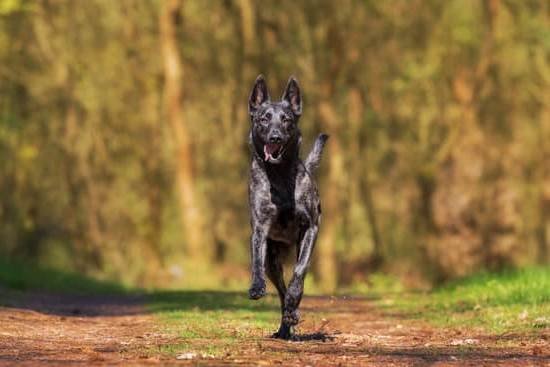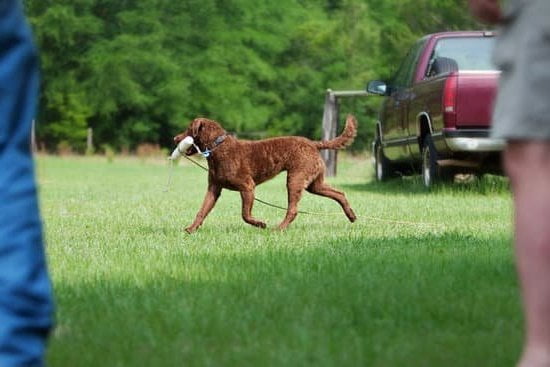There is no single answer to the question of how to crate train an aggressive dog, as the approach you take will depend on the specific situation and dog. However, there are a few general tips that can help.
First and foremost, it is important to remember that you should never use the crate as a form of punishment. This will only make the dog more aggressive and afraid of the crate. Instead, think of the crate as a safe place for the dog to go when it needs a break from the world.
When crate training an aggressive dog, it is important to start out slowly. Put the crate in a quiet, low-traffic area of the house and only leave the dog in there for short periods of time at first. As the dog becomes more comfortable with the crate, you can gradually increase the amount of time it spends inside.
Make sure that the crate is big enough for the dog to stand up, turn around, and lie down in comfortably. You may also want to put a few soft blankets or toys in the crate to make it more comfortable.
If the dog starts to show any signs of aggression while in the crate, do not force it to stay inside. Instead, take a step back and try again later. It is important to be patient and take things slow when crate training an aggressive dog.
How To Crate Train A 6 Month Old Dog
Crate training is an important part of obedience training for your dog. It can help you housetrain your dog, keep your dog safe when you’re not home, and provide your dog with a place of his own.
The key to successful crate training is to make the crate a positive place for your dog. You should never use the crate as a punishment.
Here are a few tips for crate training your 6-month-old dog:
Start by putting your dog’s food bowl in the crate and feeding him his meals inside the crate. Once your dog is comfortable eating his meals inside the crate, start putting him in the crate for short periods of time (10-15 minutes) while you’re home. gradually increase the amount of time your dog spends in the crate.
Once your dog is comfortable spending long periods of time in the crate, you can start using the crate as a place to leave your dog when you’re not home. Start by putting your dog in the crate for a few hours and gradually increase the amount of time your dog spends in the crate.
Make sure your dog has plenty of toys and bones to chew on in the crate so he doesn’t get bored.
Never use the crate as a punishment.
Crate Trained Dog Peeing In House
There can be a number of reasons why a crate trained dog is peeing in the house. In most cases, it is due to a lack of house training. If a dog is not properly house trained, they may start to pee in the house as a way to let you know that they need to go outside. In other cases, a dog may start to pee in the house if they are feeling anxious or stressed. If your dog is crate trained and is still peeing in the house, it is important to consult with a veterinarian or dog trainer to determine the underlying cause.
Crate Training Small Breed Dogs
Small breed dogs can be difficult to house train because they are so small and can easily sneak away to hide and pee or poop. Crate training can help with house training because it confines the dog to a small area where he can’t sneak away and pee or poop.
The key to crate training is to make the crate a happy place for the dog. You should never use the crate as a punishment. Put a soft blanket and some toys in the crate to make it comfortable for the dog.
When you are crate training, put the dog in the crate for short periods of time and gradually increase the length of time the dog is in the crate. If the dog starts to whine or bark, wait until he stops before letting him out of the crate.
Is Crate Training Bad For Dogs
?
There is a lot of debate surrounding the topic of crate training dogs. Some people swear by the benefits of crate training, while others believe that it is cruel and can actually be harmful to dogs. So, is crate training bad for dogs?
The answer to this question is not a simple one. There are pros and cons to crate training dogs, and it ultimately depends on the individual dog and situation. Some dogs love being in their crates and will happily curl up in there when they are tired or need a break from their environment. Other dogs may find crate training to be uncomfortable or even frightening, and may become anxious or stressed when confined to a small space.
The main benefits of crate training dogs are that it can help to housetrain them more quickly, it can be a safe place for them to retreat to when they are feeling overwhelmed or scared, and it can be a useful tool for managing destructive behaviors. Crate training can also be helpful in preventing dogs from developing separation anxiety.
However, there are some potential downsides to crate training dogs. If dogs are left in their crates for too long, they can become anxious or restless. If they are not properly introduced to their crates, they may become fearful or anxious about being confined. Additionally, if dogs are not given enough exercise, they may become restless and destructive when confined to their crates.
Ultimately, the decision of whether or not to crate train a dog is a personal one. If you are considering crate training your dog, be sure to take into account his individual personality and needs. And if you are not sure if crate training is right for your dog, consult with a qualified dog trainer or behaviorist.

Welcome to the blog! I am a professional dog trainer and have been working with dogs for many years. In this blog, I will be discussing various topics related to dog training, including tips, tricks, and advice. I hope you find this information helpful and informative. Thanks for reading!





